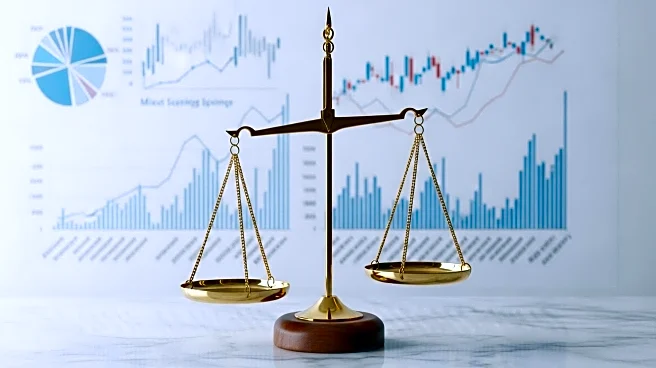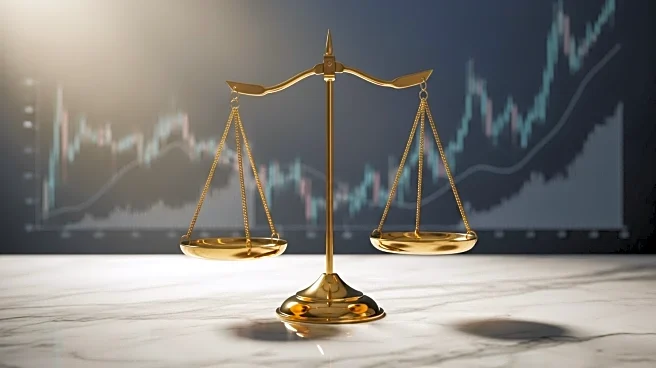What is the story about?
What's Happening?
Gold futures have reached a new record high of $3,706.80 per troy ounce, driven by increasing speculation of interest rate cuts by the Federal Reserve. The Federal Open Market Committee (FOMC) is expected to consider rate reductions in upcoming meetings, with the odds of a 25 basis point cut at the September 16-17 meeting rising to 94.1%. This trend is supported by CME's FedWatch tool, which shows a growing likelihood of multiple rate cuts by the end of the year. Gold, which typically has an inverse relationship with interest rates, becomes more attractive to investors when rates fall, as it does not pay interest. The precious metal has already seen a nearly 40% increase year-to-date, bolstered by geopolitical uncertainties and the potential for further rate cuts.
Why It's Important?
The surge in gold prices highlights the impact of monetary policy on commodity markets and investor behavior. As interest rates decrease, the opportunity cost of holding non-interest-bearing assets like gold diminishes, prompting investors to seek safe-haven investments amid economic uncertainty. This trend could influence broader market dynamics, affecting sectors reliant on interest rates, such as banking and real estate. Additionally, the anticipation of rate cuts reflects concerns about economic growth and stability, potentially signaling shifts in fiscal policy and government spending. Stakeholders in the financial sector, including traders and policymakers, must navigate these changes to mitigate risks and capitalize on opportunities.
What's Next?
The Federal Reserve's upcoming meetings will be closely watched for decisions on interest rate adjustments, which could further influence gold prices and market sentiment. Traders and investors will need to assess the implications of potential rate cuts on their portfolios and strategies. Additionally, geopolitical developments and economic indicators will play a crucial role in shaping future monetary policy decisions. Market participants may also consider diversifying their investments to hedge against volatility and uncertainty in the financial landscape.
AI Generated Content
Do you find this article useful?














